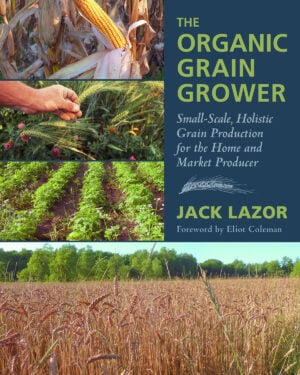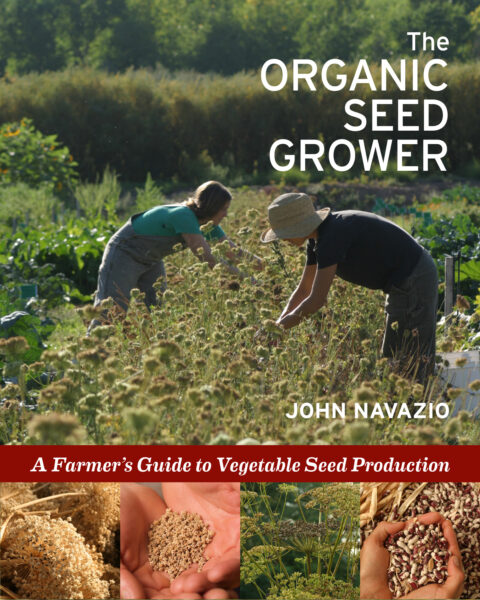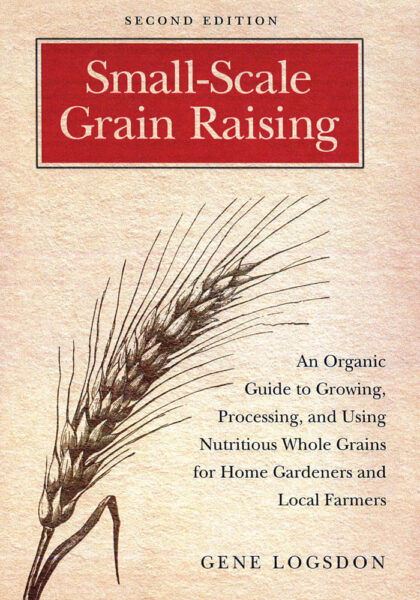From Field to Storage: Grain Storage Container Options

Wondering where to put all the grains you grew? Storing grains accurately is essential for a successful harvest; and how you store them can make or break the quality of your crops. Check out the following grain storage container options to see which is best for your farm or homestead.
The following is an excerpt from The Organic Grain Grower by Jack Lazor. It has been adapted for the web.
After and during the harvest, grain must be stored and transported in some sort of a vessel. Depending on the scale of the endeavor, anything from a grain sack to a large truck can be used. A very tiny garden harvest can be easily stashed away in bags, pails, or trash cans, but rodents and wildlife can make quick work of eating or damaging your stored harvest, so a sealed vessel is best.
Storage Container Options
 If bags are your only option for storage, try to store them out of reach of rodents. A defunct old chest freezer placed somewhere in a dry leak-proof building makes a good storage cabinet for grain bags. In recent years, shipping containers both large and small have become commercially available at fairly reasonable prices.
If bags are your only option for storage, try to store them out of reach of rodents. A defunct old chest freezer placed somewhere in a dry leak-proof building makes a good storage cabinet for grain bags. In recent years, shipping containers both large and small have become commercially available at fairly reasonable prices.
These watertight metal boxes, which are twenty or forty feet long, are ideal for keeping mice and rats away from grain stored in bags. However, you must be vigilant and keep the doors closed to avoid problems with marauding unwanted guests, as raccoons and squirrels also want to sample your hard-won harvest. Electronic plug-in rodent repellers are also an option in storage situations, but are not as sure a thing as actually preventing physical access to that very tempting source of food and shelter.
Trash Cans and Metal Drums
Trash cans and metal drums are the next storage choice after the grain bag, and you have numerous options in this department. A pretty nice rodent- proof storage container can be had for twenty-five dollars or less. The cheapest and easiest thing to do is to purchase a galvanized steel thirty-gallon trash can and corresponding lid from your local hardware store.
Food-grade fifty-five-gallon drums are often had free for the taking from food manufacturers that receive ingredients in them, and these barrelsgenerally have tightly fitting lids that are secured with a special metal band closure. I once purchased brand-new unused fifty-five-gallon plastic toxic waste storage drums for the purpose of keeping corn seed safe from rodents, and these barrels have stood up well over the years.
They are made of extra-heavy plastic and come with a metal lid secured by a special metal band. Precautions must be taken, however, to keep barrel-stored grains away from excessive heat and moisture. Cool, dry, shady places are best, and direct sunlight should be avoided because grains that have stored up the sun’s warmth can condense when the ambient outside temperature drops. Condensation is the worst enemy of stored grain.
The Bulk Bag
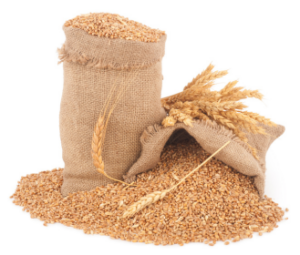 The bulk bag or “tote” is probably the most versatile unit of storage for the producer who has more grain than will fit comfortably into a few barrels, but not enough to warrant investing in a larger fixed grain bin. Totes are large flat-bottomed square sacks constructed of heavy-duty woven plastic that measure three feet by three feet, and these bulk bags stand anywhere from waist to shoulder height, depending on their capacity.
The bulk bag or “tote” is probably the most versatile unit of storage for the producer who has more grain than will fit comfortably into a few barrels, but not enough to warrant investing in a larger fixed grain bin. Totes are large flat-bottomed square sacks constructed of heavy-duty woven plastic that measure three feet by three feet, and these bulk bags stand anywhere from waist to shoulder height, depending on their capacity.
They are meant to sit on top of a standard wooden pallet and are generally moved around by forks on a tractor front-end loader or standard forklift. A waist-high bulk bag will hold between five hundred and a thousand pounds of grain, while the taller five- or six-foot model can store a ton or more.
All of these units are equipped with four very strong nylon loops, which are strategically sewn to each of the top four corners.
These loops receive the pallet forks and allow the bag to be suspended in the air for filling and emptying. The flat bottom of the tote bag has a special opening chute that can be cinched closed by means of a nylon drawstring. To discharge the grain from one of these storage sacks, tractor forks are inserted in the top loops and the bag is raised up into the air.
First, an outside draw rope is released, which allows the inner exhaust chute to drop down. This little tunnel of material hangs down about a foot, is somewhere around eight inches in diameter, and is tied on the bottom with a very flexible lightweight nylon rope. When the knot is undone, gravity empties the grain from the bag at breakneck speed.
Bulk Bag Safety Considerations
Safety and forethought are two highly encouraged considerations when dealing with totes that are suspended from forks. Remember that there is a lot of weight up there over your head. To avoid crushing injury, stay out from underneath the suspended bag. Untie the unloading neck carefully and deliberately.
Once the grain comes streaming out, there is no stopping it, so make sure it has a place to go where it can be contained. One little secret for emptying bulk bags is to suspend them so that the foot long unloading neck sticks down into another vessel like an auger hopper or some other sort of container. When the level of grain below reaches thebottom of the nylon chute, grain falling down the tube will shut itself off until more room is made for it.
This same process can be accomplished by lowering the boom and the bulk bag in order to shut off the flow of grain from the bottom. These very same storage bags (especially the very tall ones) can also be quite top-heavy sitting there on a pallet. Tumbled-over totes are quite common as they are being transported in trucks. Sometimes they slowly lean over and eventually collapse just sitting there in a shed. It’s a good idea to relift stored bags by their straps every once in a while and reset them onto the pallets below. Once a bag falls onto its side, grain will most likely spill from the top.
Automatic Filling
Small bags and barrels can certainly be filled with grain being delivered from a stationary threshing operation. My old Dion threshing machine had an elevator and a bagging attachment, and smaller garden-scale threshers are designed to empty into a low receptacle like a washtub. From here, grain can be hand-scooped to bag or barrel.
Some of the older self-propelled combines like my McCormick Model 64 had bagging stations: As grain bags were filled and tied off, they were stacked on a special carrying platform. When a load of bags had been accumulated, you kicked a little lever and dumped the bags in a heap for later pickup out of the field. Combines with grain tanks are a different story.
Large Hauling Containers
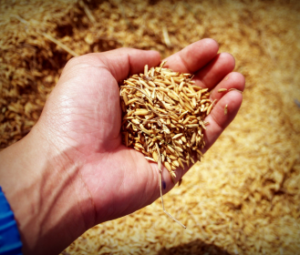 A larger hauling container is needed to accommodate greater quantities of grain that empty quite quickly from the combine’s unloading auger, however. An old dump truck or a retrofitted wagon will work. Still, it’s important to realize that grain is heavy and flows to the place of least resistance. For this reason, all holes must be patched or plugged and sideboards must be reinforced when an old farm truck or wagon is being used as a grain hauler.
A larger hauling container is needed to accommodate greater quantities of grain that empty quite quickly from the combine’s unloading auger, however. An old dump truck or a retrofitted wagon will work. Still, it’s important to realize that grain is heavy and flows to the place of least resistance. For this reason, all holes must be patched or plugged and sideboards must be reinforced when an old farm truck or wagon is being used as a grain hauler.
Large cardboard appliance boxes and a staple gun will work to seal corners with gaping holes, and plastic sheeting or inexpensive blue tarps make good floor liners. The last thing you want to see is your pre- cious grain running out a hole in a side or the floor of your makeshift grain hauler. It’s also a good idea to run a chain between the two sides and around the back of the sideboards on a farm truck or wagon.
Pull the chain tight with a hand-operated binder and your load will be more secure as the weight of the grain pushes outward against the sideboards. Check the tires of your truck or wagon for adequate pressure; a normal-looking tire can appear pretty flat once a load has been put in place. Last but not least, make some sort of provision to unload your wheeled grain receptacle. Official grain bodies will dump hydraulically and have a coal door in back through which grain can flow to its next destination.
Make Your Own Unloading Door
You can cut your own grain unloading door in the back of your homemade grain body and block it with a piece of wood or heavy cardboard. If you don’t have the luxury of a hydraulic dump body, get ready to do some shoveling and pushing of the load off the truck or wagon. This all sounds like quite a lot of work, but it sure is worth it, especially when you are harvesting and transporting your first crop of grain. Every scoop shovel full of sunlit kernels that you must move several times is your golden reward for a risk taken and a job well done.
Gravity Boxes
As your grain acreage and harvested quantities increase, hand-shoveling begins to lose its glory. It might be time to consider getting some equipment that was actually designed for the job of hauling grain from the field. Farm trucks with well-made dump bodies and rear outlet chutes will work just fine, but the tractor-drawn gravity-flow wagon is much simpler, cheaper, and better suited to the job.
“Gravity boxes” are self-unloading metal wagonsspecifically designed for hauling grain from the field. They are rectangular in shape and have a floor that slopes upward at a forty-five-degree angle from a high wall on one side to a short wall on the other. A large unloading door with accompanying grain pan is situated at the bottom of the high side wall, and grain will naturally flow down the sloping floor and out the door when it is opened by turning a hand wheel. Gravity box capacities are measured in bushels, and they come in sizes from one to five hundred bushels. (A bushel is basically one and a quarter cubic feet.)
After struggling for several years with wooden- slatted hay wagons and stapled cardboard sides, I bought my first gravity box in 1991. It was basically a piece of junk, but not to me. It held 125 bushels and did not tow straight, but, at the time, I felt like it was good value for my three hundred dollars because I didn’t have to shovel grain by hand anymore.
Gravity Box Design Dynamics
Average-sized gravity wagons range between 250 and 350 bushels, and a 300-bushel wagon fully loaded with a heavy crop like wheat or soybeans weighs in excess of nine tons. That’s a lot of weight to pull out of a field, especially if you have to climb any inclines. I’ve managed to accumulate six more of these medium-sized wagons over the years, and I’ve learned some painful lessons.
For one thing, because of the inclined bottom design, these units carry much of their weight up high, and this elevated center of gravity makes them quite top-heavy and prone to roll over. I remember pulling nine-plus tons of wet corn up an icy road out of a river bottom field in late November 1995. We had two tractors hitched one in front of the other to get enough traction to make the hill, and we were moving right along and almost to the top when the gravity box began to sway and rock wildly. In a matter of seconds, it was lying on its side with its load of corn all over the ground.
The lesson to be learned from this is to make sure you have a heavy-enough tractor with adequate traction to pull a fully loaded grain wagon through difficult and challenging terrain. The same holds true for descending a steep slope, because a heavy wagon full of grain can push a tractor down a hill and into a potentially disastrous situation.
Tips for Using Gravity Boxes
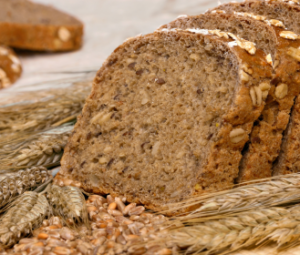 Another little word to the wise about using a gravity box is to always make sure the unloading door is fully closed before pulling the unloading lever on the combine. There’s nothing more frustrating than watching grain pour all over the ground from up in the combine cab. The wagon chassis, also called the running gear, under the gravity wagon must be in good condition to safely bear all the weight being carried.
Another little word to the wise about using a gravity box is to always make sure the unloading door is fully closed before pulling the unloading lever on the combine. There’s nothing more frustrating than watching grain pour all over the ground from up in the combine cab. The wagon chassis, also called the running gear, under the gravity wagon must be in good condition to safely bear all the weight being carried.
Good tires, well-lubricated wheel bearings, and a wagon hitch and turning apparatus with tight tie-rod ends are all essential to keep a heavy grain wagon safely on the road.
The last thing you want is an out-of-control wagon heading for an oncoming car. The very last consideration when buying a used gravity box is the condition of the box itself—older used wagons are bound to be somewhat rusty, but should be free of holes. Out in the Corn Belt, gravity wagons have been pretty much replaced by large thousand-bushel grain carts that combines unload right into while on the go; for this reason, there are plenty of these smaller units for sale.
Prices range from five hundred to two thousand dollars and are generally much higher as the harvest season approaches. Several good gravity- flow grain wagons can really lend a good helping hand even in a small grain operation.
Recommended Reads
Recent Articles
Garden strawberries are excellent for both covering the ground and for growing fruit. If you’re planning out a forest garden, or are just looking for a plant to use as ground cover, strawberries are a great option. The following is an excerpt from The Home-Scale Forest Garden by Dani Baker. It has been adapted for…
Read MoreAsparagus is a delicious vegetable with a layered history. How did this aspiring spear make its way from growing in the wild to appearing on our plates? The following is an excerpt from the The Seed Detective by Adam Alexander. It has been adapted for the web. “Nature gives us the key to every secret…
Read MoreInterested in growing trees? Here are some tips on successfully planting, transplanting, and pruning trees to create a flourishing forest garden! The following is an excerpt from The Home-Scale Forest Garden by Dani Baker. It has been adapted for the web. Planting Potted Trees and Shrubs If you order potted trees, check with your supplier to…
Read MoreWith the right strategies and practices, composting on a small farm is surprisingly easy and inexpensive. Just follow these steps for making compost, and your farm will be thriving in no time! The following excerpt is from The Lean Farm Guide to Growing Vegetables by Ben Hartman. It has been adapted for the web. (All photographs by Ben…
Read MoreGarlic mustard: while known as “invasive,” this plant can be consumed in its entirety and has great nutritional value. Plus, the garlic-flavor is a perfect addition to any recipe that calls for mustard! The following are excerpts from Beyond the War on Invasive Species by Tao Orion and The Wild Wisdom of Weeds by Katrina…
Read More

